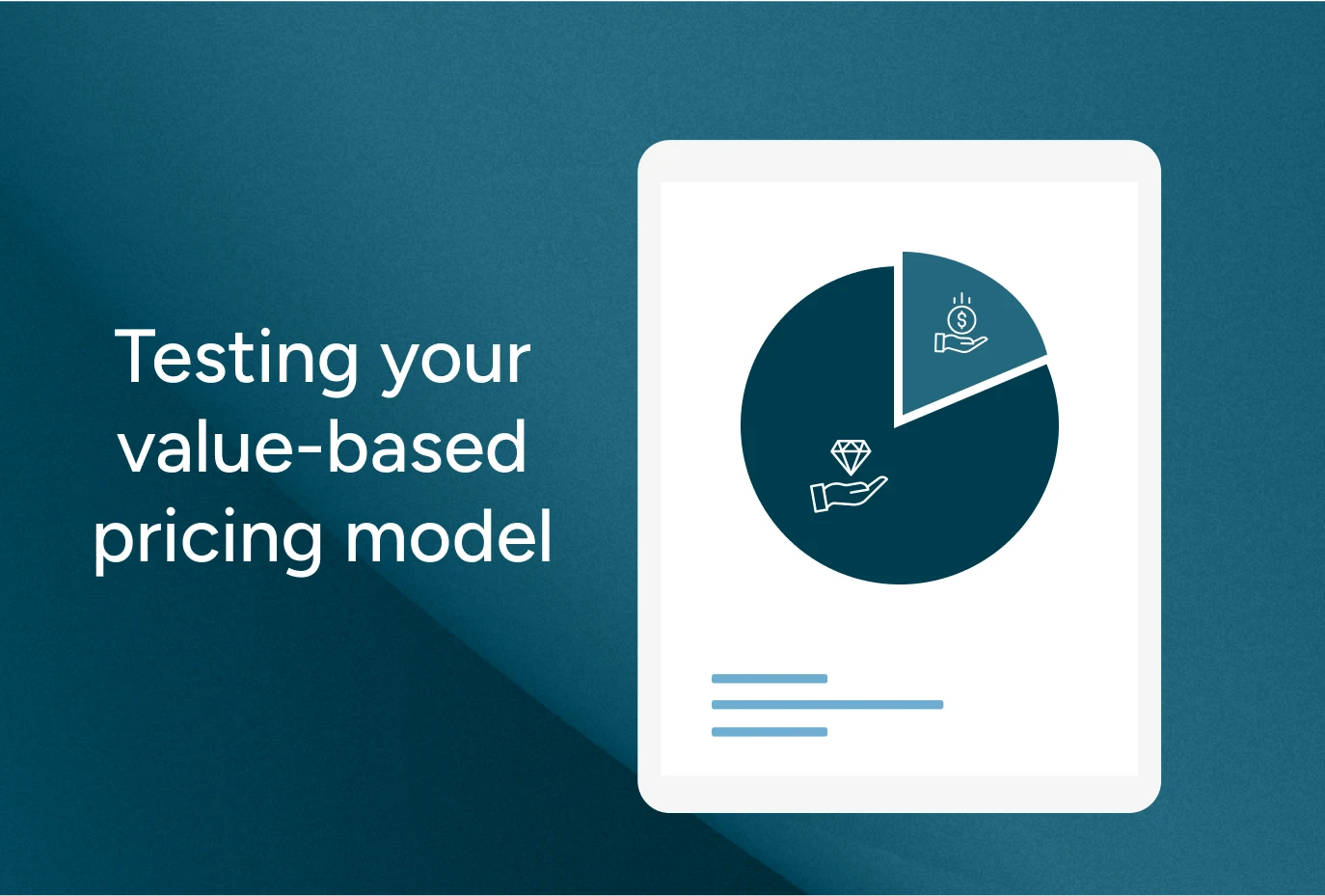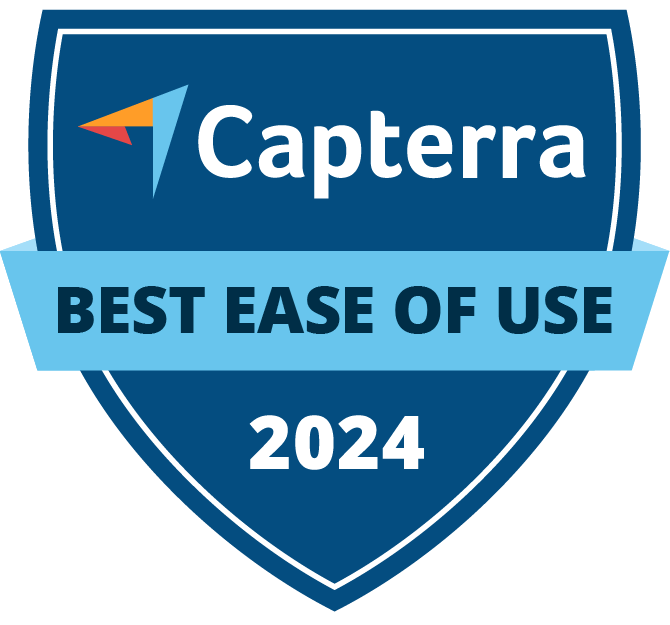Testing your value-based pricing model: tips & best practices


Pricing is part of your product—not an afterthought. If you’re building a SaaS with real outcomes (time saved, revenue unlocked, risk reduced), value-based pricing is the most reliable way to capture a fair share of that value. But “value-based” isn’t a single number; it’s a living system that evolves with your segments, features, and market context.
In this guide, you’ll learn how to test value-based pricing systematically: from interviewing customers and quantifying willingness-to-pay, to running safe live experiments and reading the results with proper finance guardrails.
If you only take one idea with you, make it this: test the value metric first (seats, usage, outcomes), then fine-tune the number. Get the metric right and everything else gets easier: packaging, upgrades, and long-term unit economics.
Quick refresher: what value-based pricing is (and isn’t)
Value-based pricing sets price according to the value your product creates for a specific segment—not your costs or competitors’ list prices. It’s about what customers gain (time saved, revenue unlocked, risk reduced) and how much of that surplus you can capture.
How it compares:
- Cost-plus: add a margin to costs. Simple, but ignores perceived value.
- Competitor-based: anchor to market averages. Useful guardrail, weak for differentiation.
- Value-based: price to outcomes for clear segments, justify with ROI proof and iterate.
Tip: value-based doesn’t always mean “higher.” For some segments the right value price can be lower than competitors, improving conversion and lifetime value. Pricing is also one of your fastest levers for profitability—when you test it systematically.
Why testing is non-negotiable
Pricing is not a one-time decision—it’s a system. Markets shift, your product evolves, and willingness-to-pay (WTP) changes as users adopt more features. Small price/packaging moves compound across your base and often outperform big feature launches. Treat pricing tests like product work: define the hypothesis, instrument properly, and learn relentlessly.
Practical testing methods
Customer interviews & surveys
Use interviews to uncover value drivers, alternatives, and buying triggers. Quantify with:
- Van Westendorp (acceptable price range)
- Gabor-Granger (demand at discrete price points)
- MaxDiff (feature importance by segment)
Tips: segment by job-to-be-done & size, ask outcome-first questions, include WTP prompts, and map procurement (“who signs?” “which budget?”).
A/B testing price points
If you have traffic/volume, run live experiments on:
- Amount ($49 vs $59), metric (seat vs usage), bundles, anchors/decoys
- Keep billing terms constant (or test separately)
- Monitor CAC payback and early churn for exposed cohorts (set thresholds ahead of time).
WTP analysis (when A/B isn’t feasible)
Combine historical elasticity, conjoint/choice modeling, and deal-desk mining (discount patterns, “must-have” features). Reconcile recommended prices with packaging and your sales motion.
Feature-value mapping (build tiers the right way)
Map each capability to outcome, segment, usage intensity, and stickiness. Put high-leverage, high-stickiness features behind upgrades, but keep “aha!” features in entry tiers to accelerate activation. Validate with product analytics and an explicit tracking plan so you can read the impact confidently.
Real-world SaaS case studies
Slack (2025): More AI value, selective price rise
Slack kept Pro pricing unchanged but added core AI features; Business+ rose ~23% (from £9.75→£12) with advanced AI and deeper Salesforce integration. Value added (AI) justifies higher WTP at upper tiers while protecting entry adoption. (TechRadar)
HubSpot (2024): Seat-based model aligned to roles & access
On March 5, 2024, HubSpot moved all Hubs to seat-based pricing with a Core Seat (edit + AI access) and free View-Only Seats, and removed Sales/Service seat minimums—tying price to who actually edits/benefits. Classic “price to value metric” shift. (HubSpot)
Zapier (2024): Task tiers to match usage value
Zapier reworked plans with new task tiers (e.g., Professional from 750 tasks) and moved some accounts to higher-value plans at no extra cost—aligning monetization with actual usage and reducing upgrade friction. (Zapier)
Benchmark the method, not the numbers: segment, quantify WTP, test price metric & bundles, then communicate value.
{{discover}}
A step-by-step testing plan (template)
Definesegments & jobs-to-be-done
Choose a value metric (seats, usage, outcomes) per segment; list deal-breakers.
- Map features to value
Score by outcome impact, adoption, and stickiness; draft Good/Better/Best; ensure analytics exist to prove value post-launch.
- Estimate WTP
Interviews + Van Westendorp/Gabor-Granger; sanity-check vs. competitor ranges.
- Pick experiments
Select 1–2 price points, 1 bundle change, 1 billing-term change. Keep scope tight to isolate signal.
- Instrument & QA
Before launch, verify event tracking for trials, conversion, upgrade/downgrade, usage milestones, and cancellations to read results by cohort and segment.
- Set guardrails
Pre-declare acceptable deltas for conversion and CAC payback (e.g., ≤12 months), plus early churn by segment. Add finance checks so plan changes don’t break revenue recognition or forecasts (e.g., how a term change affects recognition and deferred revenue waterfall).
- Run & monitor
Run for 2–4 weeks (or N deals) per test; segment results by channel, size, region; watch downgrades in exposed cohorts.
- Cohort follow-up
Check 30/60/90-day retention and expansion; recompute LTV/CAC; read win/loss notes and CS tickets to understand objections and perceived value. Track NRR and CES signals for exposed cohorts.
- Rollout & communicate
Publish an internal pricing playbook (positioning, objection handling, discount policy), update help docs and invoices, and retrain sales & success.
Do’s and don’ts
Do
- Test the value metric (seat vs usage) before obsessing over exact numbers.
- Keep the entry tier frictionless to maximize activation and referral loops.
- Pair pricing moves with product & success motions to protect churn (onboarding, guidance, adoption).
- Track CAC/LTV and NRR during tests so you don’t “win” on ARPU while losing the unit economics plot.
Don’t
- “Set and forget.” Re-evaluate at least quarterly or after shipping major value.
- Mix too many variables at once (price + bundles + terms) and expect clean signal.
- Ignore cash/renewal impacts when shifting to annuals or pre-pay incentives—fold changes into revenue recognition and deferred revenue workflows first.
Conclusion
Value-based pricing works when it’s treated like product work: you define segments and jobs-to-be-done, map features to outcomes, estimate willingness-to-pay, and iterate on a clear value metric before chasing “the perfect number.” Instrumentation and finance guardrails keep you honest so you don’t win short-term ARPU at the expense of LTV, payback, or predictability.
Your next move can be simple: run 5–10 interviews per segment, pick one entry-tier experiment (price point or value metric), and ship it with clean tracking for conversion, ARPU, payback, and early churn. Follow exposed cohorts for 30/60/90 days, then decide: roll out, refine, or revert. Pair each pricing change with product and success motions (onboarding, adoption nudges, objection handling) so perceived value rises with the price.
Do this rhythmically—quarterly or after major value ships—and your pricing will stay aligned to outcomes, your upgrades will feel natural, and your forecasts will remain trustworthy.
{{newsletter}}


Discover Fincome!

Frequently Asked Questions
Expense Tracking:
Fincome is a SaaS revenue management platform designed specifically for companies with recurring revenue models (any business selling subscriptions).
Fincome automates the tracking and management of your revenues and associated KPIs (churn, LTV, CAC, etc.) in real time, without the need for a data team or manual processing, thanks to direct integrations with your billing systems and ERP.
Unlike generic BI tools, Fincome offers a turnkey, intuitive solution tailored to the specific needs of subscription-based businesses, enabling seamless collaboration across your finance, GTM, and CSM teams.
Fincome is built exclusively for companies with recurring revenue models, meaning those that track MRR or ARR, such as:
• Software publishers (SaaS)
• Media companies
• Mobile apps
• Any other B2B or B2C subscription business looking to professionalize revenue management
Fincome supports organizations at every stage of growth, from startups to mid-market and large international enterprises.
With Fincome, you gain access to a full suite of modules:
✅ Revenue: detailed ARR/MRR breakdown, cohort analysis, detection of billing errors or omissions, revenue recognition and deferred revenue (PCA)
✅ Growth: analysis of ARR movements (new business, expansion, churn, reactivation), identification of growth drivers
✅ Unit Economics: LTV, CAC, and LTV/CAC analysis by segment, channel, or geography to optimize margins
✅ Retention: deep cohort analyses, identification of key retention drivers
✅ Renewals: future MRR projections, opportunity forecasting, and churn risk reduction
✅ Forecasting: revenue growth scenario modeling to better inform strategic decisions
Fincome is the only turnkey platform built specifically for recurring revenue businesses that combines:
✅ A complete, reliable view of your recurring revenues (MRR, ARR, churn, LTV, CAC, cohorts, renewals, revenue recognition, deferred revenue)
✅ Fully customizable, automated, shareable reports powered by AI, delivering actionable insights to guide your strategic decisions
✅ Expert support to help structure and interpret your analyses, without needing to build an internal data team
✅ The ability to generate future growth scenarios, compare them side by side, and track actual vs. forecasted performance, all in real time
Unlike traditional BI tools, which require you to build and maintain your own metrics (often consuming internal resources just to produce static data visualizations), Fincome transforms your SaaS metrics into concrete, actionable recommendations — helping you move faster, with more impact and operational efficiency.
Yes! If you use an unlisted or in-house billing system, no problem — you can easily import your billing data via Excel or push it through our public API. You can access our public API documentation here.
With Fincome, you can:
✅ Reduce up to 90% of the time spent calculating and reporting your KPIs
✅ Make faster, more accurate strategic decisions
✅ Recover up to 5% of lost revenue by detecting errors or omissions
✅ Cut the risk of manual spreadsheet errors by 80%
Absolutely. Data security is at the heart of what we do. Fincome is SOC 2 Type I certified, ensuring a high level of data security and protection.
Your data is collected exclusively via read-only APIs and hosted on secure servers located in France. We never share your data with third parties without your consent.
For a detailed review of our security practices, please visit our dedicated security page.
At Fincome, customer success is a core priority. We guide you from the very start — structuring your data, training your teams, and optimizing your use of the platform to deliver value quickly.
Our team remains by your side to answer strategic or technical questions, share best practices, and help you get the most out of your analyses.
Simply request a demo on our website. We’ll walk you through the platform, assess your needs, and guide you through a smooth deployment.
Most deployments and team trainings take no more than two weeks to get fully up and running.
👉 Request a demo
Income Analytics:
Lorem ipsum dolor sit amet consectetur adipiscing elit etiam vehicula. Etiam vehicula condimentum nunc, a semper elit luctus id. Duis fringilla enim non neque aliquet.
Lorem ipsum dolor sit amet consectetur adipiscing elit etiam vehicula. Etiam vehicula condimentum nunc, a semper elit luctus id. Duis fringilla enim non neque aliquet.
Lorem ipsum dolor sit amet consectetur adipiscing elit etiam vehicula. Etiam vehicula condimentum nunc, a semper elit luctus id. Duis fringilla enim non neque aliquet.
Budget Management:
Lorem ipsum dolor sit amet consectetur adipiscing elit etiam vehicula. Etiam vehicula condimentum nunc, a semper elit luctus id. Duis fringilla enim non neque aliquet.
Lorem ipsum dolor sit amet consectetur adipiscing elit etiam vehicula. Etiam vehicula condimentum nunc, a semper elit luctus id. Duis fringilla enim non neque aliquet.
Lorem ipsum dolor sit amet consectetur adipiscing elit etiam vehicula. Etiam vehicula condimentum nunc, a semper elit luctus id. Duis fringilla enim non neque aliquet.
Wealth Management:
Lorem ipsum dolor sit amet consectetur adipiscing elit etiam vehicula. Etiam vehicula condimentum nunc, a semper elit luctus id. Duis fringilla enim non neque aliquet.
Lorem ipsum dolor sit amet consectetur adipiscing elit etiam vehicula. Etiam vehicula condimentum nunc, a semper elit luctus id. Duis fringilla enim non neque aliquet.
Lorem ipsum dolor sit amet consectetur adipiscing elit etiam vehicula. Etiam vehicula condimentum nunc, a semper elit luctus id. Duis fringilla enim non neque aliquet.






